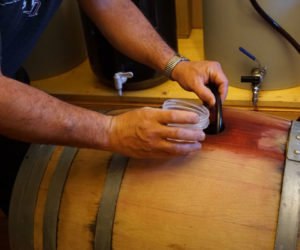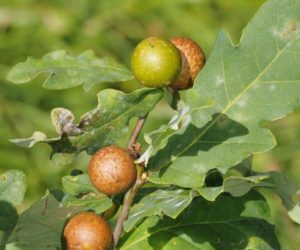
,
Q
My pear wine is watery and flat, I have already bottled it. Is there anyway to save it? It was my first attempt at winemaking and I don’t know what went wrong. The only thing I can tell you is that I made it from fresh fruit and followed all directions in my recipe.
Pat Evans
Pitt Meadows, British Columbia
A
Though making fruit-based wine is a little different from making grape-based wine, you always want to make sure you’ve got enough sugar, acid, tannin and aromatic and flavor compounds to result in a stable (over 10% alcohol), zippy (over 6.0 g/L total acidity) and flavorful beverage.
The “numbers” are relatively easy to shoot for and can be adjusted up or down depending on how your initial fruit comes in. Always use a juice with an initial sugar content in the realm of 21–24 ºBrix to be sure of producing a final alcohol above 10% by volume. Initial total acidity profiles to result in a finished wine of 6.0 g/L should start around 6.5-7.0 g/L as some of the acid will drop out of solution during the fermentation process. Flavor and aroma are a bit more subjective, of course, and are largely personal decisions. Before buying your fresh fruit, be sure to eat at least a few good mouthfuls. Is it delicious? Does it make you salivate and want more? I find that organic, wild-crafted or home-grown produce is far superior to mass-produced supermarket fare and will restate for the record that a finished wine is only as good as the starting material.
If you’re stuck with not-so-great starting material you can attempt to tart it up a bit by adding a little grape juice concentrate before the primary fermentation. In your case, I would advise using white grape juice concentrate. An added benefit is that you’ll also be adding extra nitrogen, amino acids and other goodies that yeast need to conduct a healthy fermentation.
Q
Our local winemaker (at Galena Cellars) can detect potassium sorbate in wine, after it is used to prevent refermentation in sweetened-back wines. I’d like to substitute a non-fermentable sweetener for sucrose and am considering using stevia, a widely used sweetener in Japan. Although it is expensive, one needs only about 1/10 the amount of sugar. Do you know anyone who has experience with this, or can you suggest something else?
Ray Ruthenberg
Woodbine, Illinois
A
Indeed, stevia (Stevia rebaudiana) is a natural sugar substitute and one that is gaining in popularity with home winemakers. I have certainly heard of people using it with great success as it seems to dissolve instantly if used in its powdered form. It also remains stable in solution, doesn’t cause “off” flavors and, as far as I know, is a non-fermentable compound, so no yeast or bacteria will be able to eat it and cause fizziness or sediment in the bottle. It seems to be used in levels around 50–150 mg per 750-mL bottle, depending on the level of sweetness desired. In fact, I’ve heard of many home winemakers winning awards with their stevia-sweetened wines, so it’s worth a try! As it’s not fermentable, perhaps all of the folks above who have experienced secondary fermentations in the bottle should use stevia for sweetening rather than sugar,honey or wine conditioner. Another popular sweetener that’s coming into its own as a home winemaking adjunct is sucralose, commercially known as Splenda. Have fun experimenting!







